“Richard Branson has offered a large prize to anyone who invents a device that will pull greenhouse gases out of the atmosphere. God already invented this device, and we call it a tree. Trees pull greenhouse gases out of the atmosphere through photosynthesis and ‘sequester’ it as carbon in the leaves, stalks and wood,” writes Christopher Shore in the November-December 2007, issue of Marketplace.
Living trees are nature’s lungs. They clean the air, scrub and protect the soil, conserve moisture and offer habitat to countless living things.
Bryce Nelson warns: “People who will not sustain trees will soon live in a world which cannot sustain them.” In Tree Magic: Nature’s Antennas (A Free Anthology About Trees to Nurture the Soul) we read: “Trees watch over us and provide us with what we need to live on this planet.”
In just one year a large tree converts 12 kilograms of carbon dioxide—18,000 kilometres’ worth of car emissions—into enough oxygen to sustain a family of four over that period.
We should plant for the planet. Some are acting on the urgency. The Waterloo, Ont., 10,000 Tree Program, as well as the international Billion Tree Campaign, spearheaded by Nobel Peace Prize laureate Wangari Maathai, are heartening examples. While some are going green to reduce emissions, it is crucial that all Earth’s citizens act on this urgency to rejuvenate our damaged lung before it’s too late.
We are the only creature that soils its nest, voraciously devouring fossil fuels while rapaciously felling forests that would counteract the results of the former. Greed has us blinded beyond comprehension: For pure horrors, regard what we have done by clear-cutting the Queen Charlotte Islands (see The Golden Spruce by John Vaillant), denuding vast expanses in the B.C. heartland and Oregon, and the massive assault on the Brazilian rain forest.
Clear-cutting the boreal forests for paper pulp has decimated the bird population. “More than 300 species nest in the boreal forest—more than two billion individual birds in all . . . This is the most important bird nursery in North America,” Jennifer Baker writes in Ontario Nature, 2008.
While the bird population declines, the pulp mills growl on. “God has cared for these trees, saved them from drought, disease, avalanches and a thousand tempests and floods. But he cannot save them from fools,” wrote John Muir, founder of the Sierra Club.
In 1929, on a trip to Canada, Winston Churchill remarked to his son: “Fancy cutting down all those beautiful trees to make pulp for those bloody newspapers, and calling it civilization.”
The Amazon Basin produces roughly 20 percent of the Earth’s oxygen. But fires to clear the rain forest make Brazil a leading contributor to greenhouse gases while decreasing its ability to produce oxygen. While we in North America self-righteously protest against this, we import 50 percent of Brazil’s timber.
A tale of two trees
Two red oak trees render their emblematic stories. Both were already living and giving before Mozart began composing music.
First encountering the red oak during a music school fundraising garden tour, I hear a cello-flute-violin trio under a pink flowering chestnut mellow the June air with Mozart’s “Divertimento.” The setting is framed in a stunning tableau: a pulsing blend of robins, blue birds, mourning doves, finches, nuthatches—all song suspended; squirrels hang in bug-eyed suspension to the music, the distant woodpecker halts in mid-hammer, the Mozart cadences waft through the garden fragrance while overhead a red-tailed hawk silently coasts the thermal lifts in the azure sky.
In the 19th century, a father purchased a tract of land as a healing retreat for his asthmatic daughter. On his neighbour’s property line stood a magnificent ancient red oak. The owner planned to cut it down. For him, in Blake’s words, “A tree is only something that stands in the way.” He purchased the farm from the neighbour for the love of the tree and for the fresh air it provided for his oxygen-starved daughter.
Today, the farm is under agreement with a forest conservancy. From a girth measuring 310 centimetres and a canopy stretching more than 40 metres, the oak rules over a large CO2-absorbing family: a hemlock grove, a hundred varieties of pine, chestnut, butternut, beach, a century-old forsythia, younger oaks, maple, birches and hickory.
Mozart wafts through the floral scents. Leaning into the massive oak I sense its life coursing through its limbs, roots clinging over the curvature of the earth, drinking, drinking litres and litres every hour, creating life sustenance, every day and every season giving, producing, wasting nothing in its habitation, its life throbbing into a total contribution for the surrounding habitat: cooling photosynthesis converting carbon dioxide into oxygen, the Earth’s best known nutrients in fall leaves, and shaded home to a large family of living things. A vibrant magnificent metaphor of life itself.
On a storytelling trip I encounter another ancient red oak. In the latter part of the 20th century a developer planned a suburb, bulldozed, killing a colony of trees—in Thoreau’s words, “civilizing them off the face of the earth”—then named the streets after the deceased! Somehow one ancient oak was spared. Arriving for a visit I find the owner pushing a reel mower snipping grass beneath the tree’s canopy.
As we rock in hickory rockers on his open porch, the evening sun filtering down through the greenery, he comments: “That oak re-invigorated my life; in the death-grip of despair it has taught me to hope again; early dawn I draw strength just observing its massive spread opening to the sunrise; in rain storms the tree’s muscular elasticity stirs my faith amidst life’s tempests.”
The trees’ cooling photosynthesis wafts across this porch, slanting the bedroom lace curtains in a kind of peaceful consent. He continues: “In winter, the tree appears gaunt and lifeless, but I enjoy sensing it charge its batteries. And its composted fallen leaves provide the best known nutrients for my award-winning vegetable garden. The tree never allows me to buy commercial fertilizer.”
Becoming pensive, he swallows hard and offers: “A year-and-a-half ago our 11-year-old darling died of leukemia.” Silence and deep breathing. I ask about her age, her name. Out of his wallet, wrapped in a paper sheet, he hands me a picture of Sandra—photo-fissured like fine English bone china—wide-eyed, big-toothed, pig-tailed, smiling unabashed.
“I just could not shake the loss,” he says. “My limbs, my mind, my spirit, all my bones felt like dead wood. Then in an early spring dawn I saw again this tree—in resurrection for perhaps the 300th time—coming to bud, a first robin exulting in song. This porch has become my week-day church.”
Travelling through the area another year, I turn in to the area to re-kindle memories of the “resurrection oak.” Unable to locate the house I check the street name and house number again. The place is unrecognizable; the entire lot—its house, its vegetation, the immovable oak—have been uplifted and another stage set dropped in.
Stunned, immobilized, but finally gathering my intent, I step out to meet the current owner. We sit in the now glassed-in porch, air conditioners humming. I remark on some changes he had made and he is eager to tell me of his doings.
The previous owner had had a stroke and was moved to a nursing home. Purchasing the property at a low offer, he was eager to perform major remodelling. I look over the antiseptic yard, perfect chemically induced lawn, controlled non-native shrubs banked by bark mulch, lawn sliced by a new circular asphalt driveway.
“Yes” he says, “we re-did the entire house. It was really rather old-fashioned. And we built an addition and installed an in-ground pool out back. Would you believe it, they had no air conditioning, not even a window one.”
He shows me through the house, its addition expanding to 483 square metres. We walk through hermetically sealed “cubes” full of manufactured air. Outside, five compressors throb, an oil furnace heating the pool, a 10-year-old child slouched in front of TV cartoons.
Back on the porch I comment on remembering the tree.
“The tree was a nuisance,” he says. “After we installed a large picture window and this glassed-in porch, the tree blocked our whole view of the road. And the grass wouldn’t even grow properly underneath it. In fall, the impossible leaves cost $75 just to have them hauled to the landfill. All winter I was looking at the ugly bare branches hanging over my front yard like dead wood.”
And so a tree surgeon came, amputating it limb from limb, “civilizing it off the face of the Earth.” The trunk was felled and the massive stump drilled out of the earth. To my remark that red oaks make lovely furniture wood, he adds that they installed three fireplaces, the kind that suck air out of the house and emit minimum heat while maintaining a voracious and insatiable appetite.
“We had enough wood for two winters,” he says.
In a few hours, screaming chainsaws terminated 300 years—2.6 million hours—of nourishing and magnificent being into entropic irretrievability, the life-force embedded in its acorns locked aloft in noxious fumes. I fear he’s dreaming while the world dies screaming.
The solenoids click and compressors whir again.
His egocentric enthusiasm draws me back. He shows me his enlarged garage, delighting in pointing out “the joke of a mower the previous owner pushed around,” hanging on the wall. He now rides over his re-constituted lawn in a front-loaded mower, “for better balance and for closer mowing,” with a large bagger to collect the cuttings. And he wears earmuffs to deaden the noise.
The garage now has a shelf of poisons carefully targeted to kill weeds and the myriad pests “out there.” I remember now that North Americans pump over 32 million kilograms of chemicals annually onto lawns and gardens.
“Now I’ve got the best lawn in the neighborhood and people frequently comment on it,” he tells me. “In fact, a chemical company even took pictures of my yard for their advertising.”
The automatic sprinkler kicks in, blending with the air conditioners’ whine.
“And now that I’ve got rid of all the bugs and beetles, I don’t have any more bird droppings on my lawn.”
Not a bird song in earshot either. The bug zapper zaps once, then in triple: “Gotcha!”


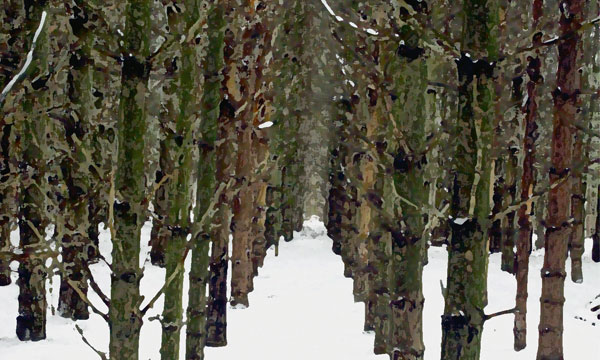


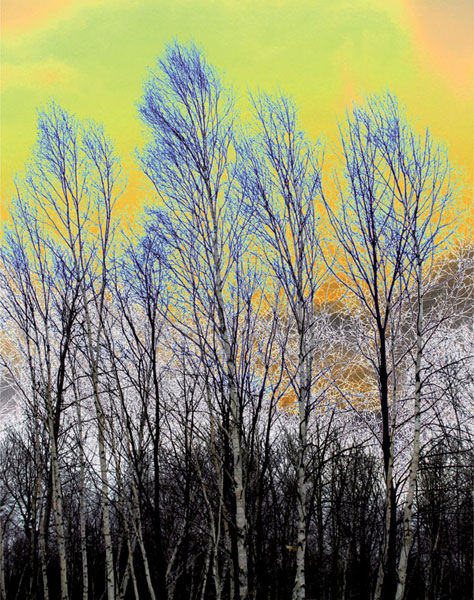
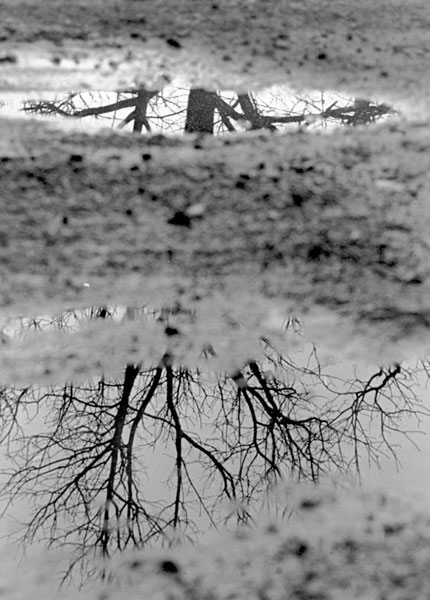
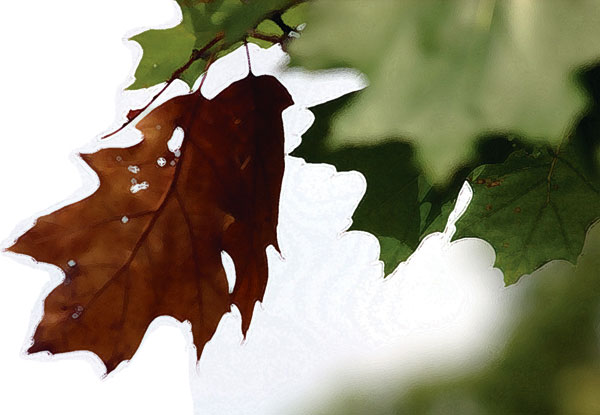


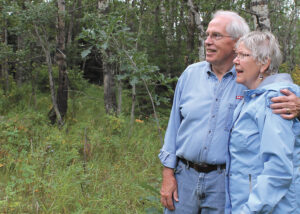

Leave a Reply
You must be logged in to post a comment.